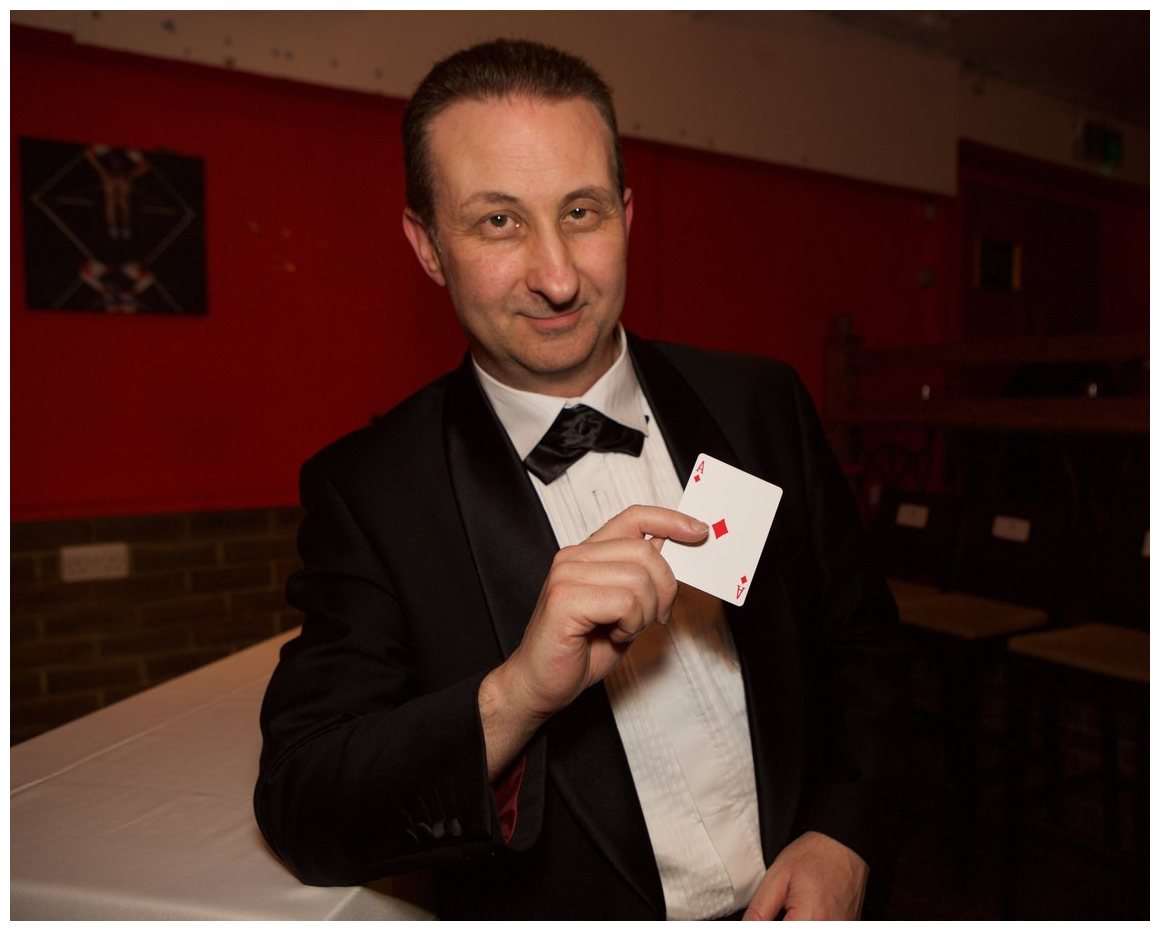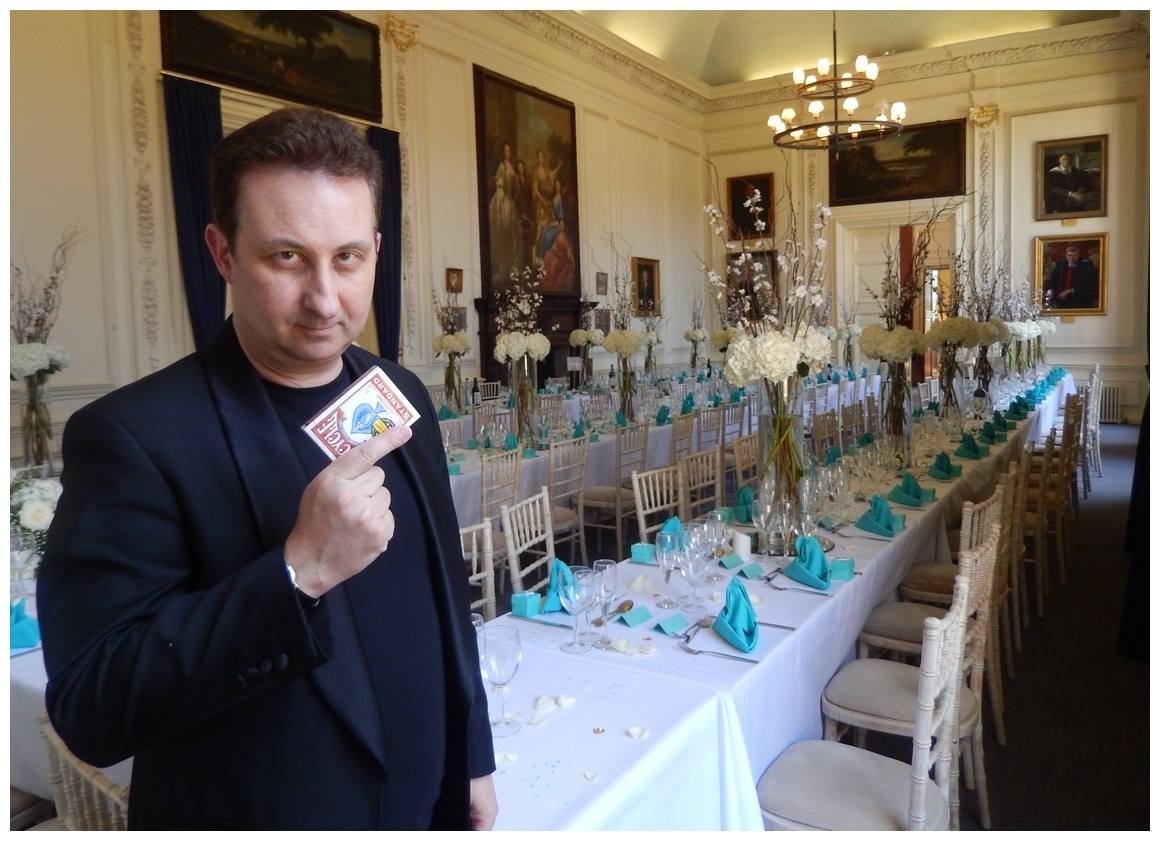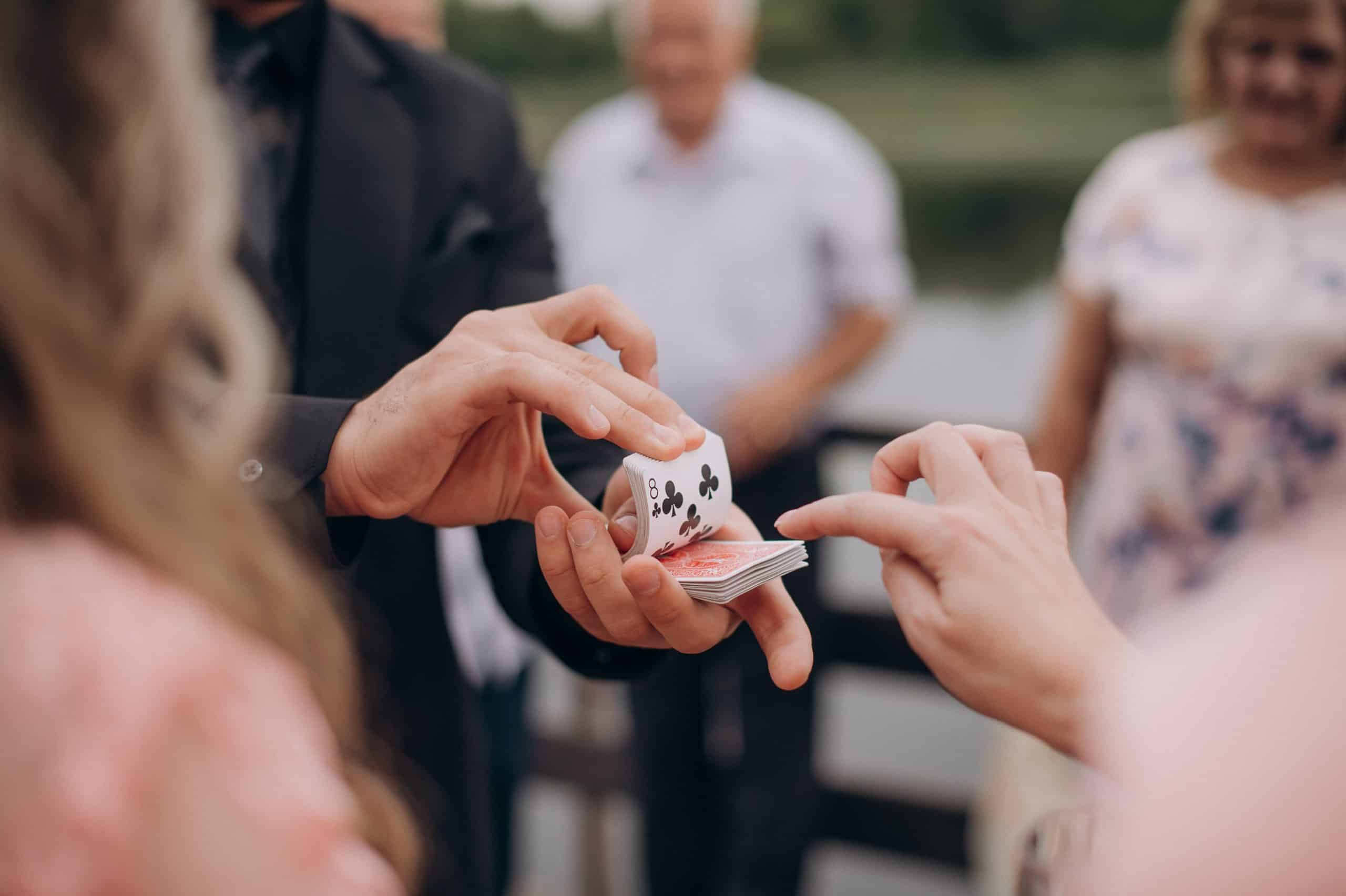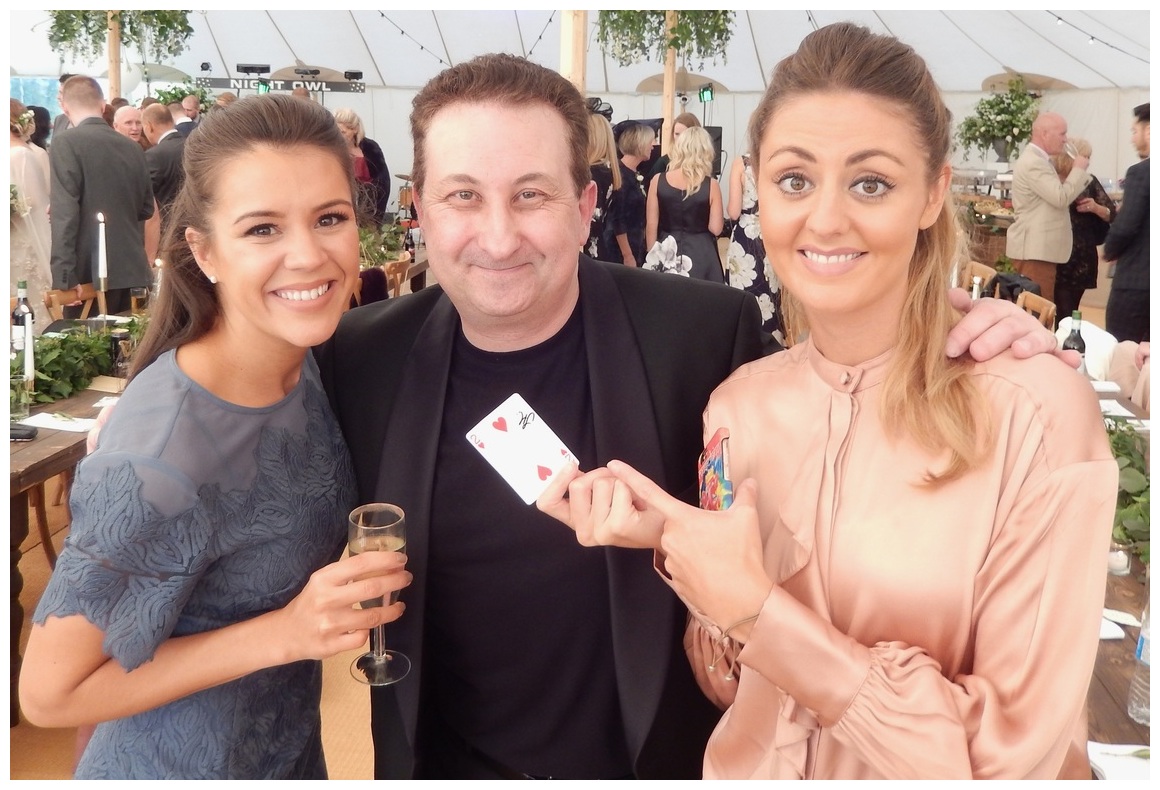
Unveiling the Psychology of Magic: Mastering Misdirection & Mystery


Andy Field is a professional magician, offering table top magic, sleight of hand illusions, mind reading and more, for a variety of occasions. Over the years Andy has built a strong global following, boasting over 5,000,000 views on his YouTube channel and an array of reviews across multiple platforms. Having amassed experience as a wedding magician, party magician & close up magician, Andy is seen as one of the industries most tried and tested professional magicians.
There’s something timeless about magic. Whether it’s a coin vanishing in a street corner act or a grand illusion in a packed theatre, people across every generation and culture are drawn to one thing. The feeling of being fooled in the best possible way. That jolt of surprise, that sharp moment of disbelief, it never really gets old.
But behind every great trick is more than skillful hands. It’s a deep understanding of how the mind works. When you explore the psychology behind the illusion, you not only enjoy it more - you learn how to make it stronger.
Read on to discover how misdirection works and how you can learn to wield it yourself.
What Exactly Is Misdirection?
Misdirection is the magician’s most powerful technique. It’s not just about distracting someone. It’s about guiding attention with such precision that the real move happens in plain sight. The Magic Circle describes it as “the art of influencing attention to manipulate perception.” That single sentence captures what makes magic feel so impossible.
In practice, it’s more psychology than sleight of hand. Take the classic Cups and Balls routine. At a glance, it seems like a test of speed. But eye-tracking studies have shown otherwise. Viewers follow the magician’s face, their voice, and the hand that appears to be doing nothing at all. Their eyes move exactly where they are meant to, while the real action goes unnoticed.
The trick isn’t hidden. It’s revealed right under your nose, just not where you’re looking.
Attentional Blindness and Selective Attention
Our brains are built to filter information. Without that filter, we would be overwhelmed by every sound, shape, and movement around us. This mental shortcut helps us function, but it also creates blind spots that magicians exploit with ease.
Inattentional blindness happens when something obvious goes completely unnoticed because our focus is locked elsewhere. Change blindness takes it a step further. It refers to how people often miss visual changes happening right in front of them.
One of the best-known examples is the colour-changing card trick. The performer draws all attention to the card selection process. While the audience is focused, everything from the backdrop to the clothing changes. Most people do not notice a thing. The swaps are visible, but the brain ignores them, and that is where magic lands hardest.
Expectation, Priming and Cognitive Schemas
Magicians rarely surprise the brain directly. Instead, they train it to expect something else. Before a trick even begins, they are already planting ideas and shaping assumptions. This is where priming and cognitive schemas come into play.
Priming is the subtle setup. It might be a phrase, a gesture, or even the way a deck is held. These cues trigger familiar patterns in the mind. Cognitive schemas then fill in the gaps, using past experience to predict what happens next.
Classic card forces are a perfect example. The magician offers a “free” choice, but the conditions are already tilted. The audience picks exactly what they were meant to, convinced it was spontaneous.
What makes this effective is not the trick itself - it is how well the setup hides in plain sight. If you'd like to learn how to better understand priming & cognitive schemas, get in touch with me, Andy Field, today for magic lessons near you.
Manipulating Memory
Memory feels solid, but it is far from reliable. What we remember is not a perfect recording. It is a story shaped by emotion, suggestion, and gaps our brains rush to fill. Magicians take full advantage of this.
False memory happens when people confidently recall details that never occurred. Post-event suggestion makes it even easier to alter memory after the fact. If a performer frames a moment carefully, the audience will often reconstruct it to match the narrative.
Take the signed-card-to-wallet routine. Spectators frequently insist they checked the wallet before the trick began. In truth, they never did. But the way the trick is structured plants that belief so firmly, it feels like fact.
The most convincing illusions are not just seen. They are remembered exactly the wrong way.
Cognitive Load and Dual Tasking
The brain does not multitask well. It shifts rapidly between tasks, but it cannot process multiple complex inputs at once. Magicians use this limitation to their advantage by layering speech, movement, and story to overload working memory.
When a magician performs the Ambitious Card routine while chatting with the crowd, every line and gesture splits attention. The audience laughs, listens, and watches, but they are juggling too much to track everything. That is when the key move happens.
By the time the card rises to the top again, no one remembers seeing anything suspicious. The brain was too busy processing the joke or following the rhythm of the patter.
The trick succeeds not by hiding the method, but by making sure it is impossible to spot in real time.
Emotion, Surprise and the Peak-End Rule
Moments of strong emotion anchor memories. This is the core of the peak-end rule. People remember the most intense part of an experience, along with the ending. Everything else fades.
Magicians use this principle to make their performances unforgettable. Emotional spikes narrow focus. When the audience gasps, laughs, or recoils in shock, they stop analyzing and start reacting.
One classic example is the fire wallet reveal. The flash of flame catches people completely off guard. It sparks surprise and excitement that overwhelm critical thought. Even if someone had a sense of the trick’s structure, the emotional jolt pushes the method out of focus.
By closing on a high note, performers make sure the memory sticks. The magic is not just seen. It is felt, and that makes it last.
Ethics of Deception in Entertainment
Magic is built on deception, but it is the kind people want. The audience agrees to be fooled, and the magician agrees to do it fairly. This balance is what keeps magic fun and respectful.
Responsible performers follow clear boundaries. They avoid humiliation, never exploit sensitive topics, and make sure the audience is always in on the spirit of the game. It is entertainment, not manipulation.
The Magic Circle enforces a strict code of conduct. Members commit to preserving the mystery of the craft while respecting their spectators. That includes not exposing secrets, staying honest in presentation, and keeping performances safe and appropriate.
Good magic creates wonder without crossing the line. It earns trust while delivering surprise.
Applying Misdirection in Your Own Magic
You do not need a stage or an audience to start learning misdirection. You just need awareness and practice. Two simple drills can build that foundation quickly.
First, try the gaze drill. Hold an object in one hand but shift your eyes to the other. Most people will follow your eyes, not your hands. Second, practice timing a reveal with a natural speech cue. Say something meaningful right as you perform the move. It diverts attention smoothly.
These basics are the roots of more advanced routines. To go deeper, explore Andy Field’s Sleight of Hand page for structured guidance.
If you are ready to master advanced misdirection, Andy offers one-to-one coaching tailored to your skill level and goals.
Conclusion and Invitation to Learn More

Understanding these principles makes magic more than entertaining. It makes it unforgettable. Whether you are looking for magic lessons near you or booking for an event, the right knowledge changes everything.
To explore coaching or private tuition, reach out to Andy Field today and start building your own magic from the inside out.
FAQs
Can I learn misdirection techniques online or do I need live lessons?
You can absolutely start online, especially with video tutorials and theory guides. But live lessons offer real-time feedback, better timing practice, and a faster path to clean technique.
What psychological principles should a beginner study first?
Begin with attention control, memory bias, and audience expectation. These are the core elements of most strong effects and a solid base for further learning.
How long does it take to master sleight-of-hand?
It varies. With regular practice, you can develop solid control in a few months. Mastery takes time, but small wins happen quickly and keep you motivated.
Are magic lessons near me suitable for children as well as adults?
Yes. Andy offers magic coaching tailored for different ages and skill levels. Lessons are adjusted to match pace and interest, making them fun and safe for kids and grownups alike.
MAKE AN ENQUIRY
Oops! We could not locate your form.




